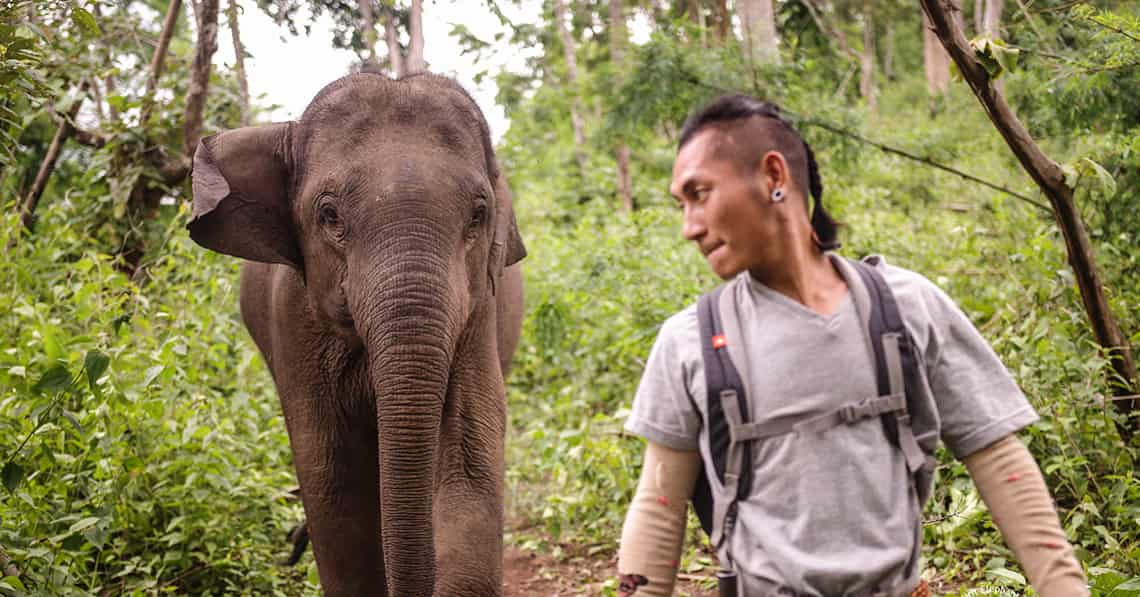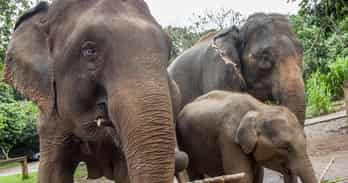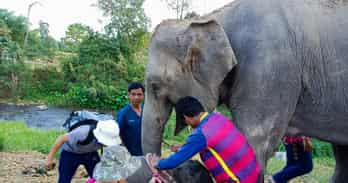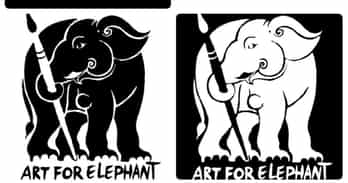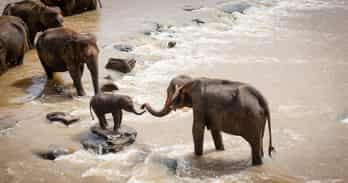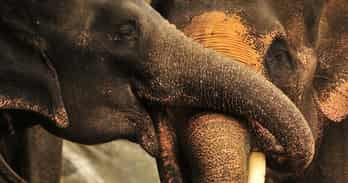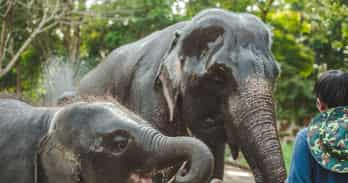Elephants are a beloved national symbol; in fact, the first Thai flag featured an elephant.
At the turn of the last century, Thailand had over 100,000 elephants, mostly wild, though elephants have been caught and domesticated in Thailand for millennia. For centuries, elephants would be taken from wild herds and used in war, to log teak as well as for transportation, often being returned to the wild after they are no longer needed.
Thailand officially banned teak logging in 1989, leaving thousands of elephants jobless. The streets of Bangkok, Chiang Mai and other cities filled with elephants being walked with their mahouts, begging for food. Thankfully, due to public pressure, the government banned elephants from city streets. Elephants are costly to feed, and most domesticated elephants now have to rely on tourism for a living. There is still a wild elephant population, but they need vast areas of land are required to sustain wild herds and human-elephant conflict often arises.
For the past few decades, the three thousand captive elephants have been working mostly in the tourism industry. But as the industry has changed, once again, elephants’ future is in jeopardy. Liberal western tourists prefer not to see elephants ridden, perform tricks, or in chains. This has led to many ‘sanctuaries’ and ‘parks’ opening. But with no oversight, no standards set and no transparency, there is a lot of confusion as to which ‘parks’, ‘camps’, and ‘sanctuaries’ are most deserving of the tourist dollars. The Asian Captive Elephant Working Group (ACEWG) was formed a few years ago to redress this worrying issue. It aims to disseminate accurate information, to set standards to protect the welfare and wellbeing of not just elephants, but their mahouts, Citylife follows and recommends the guidelines and approach set by ACEWG.
Read the multiple stories we have written about the complexities and challenges in caring for our beloved national symbol.
